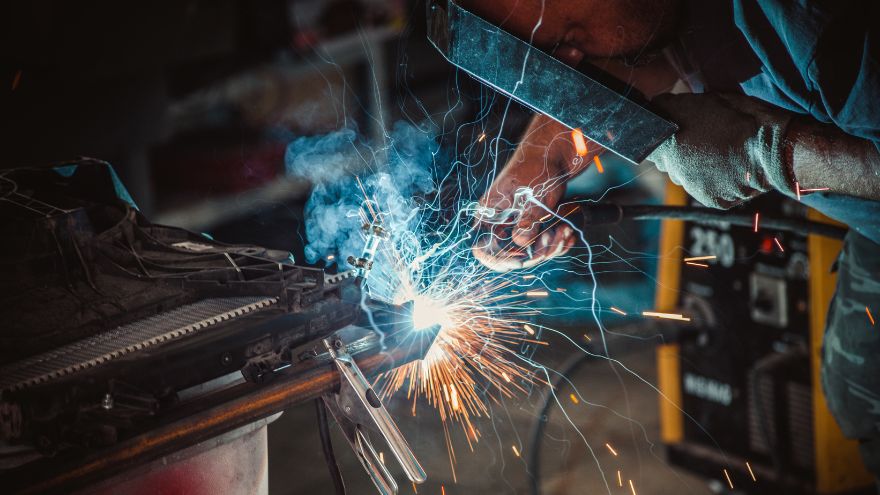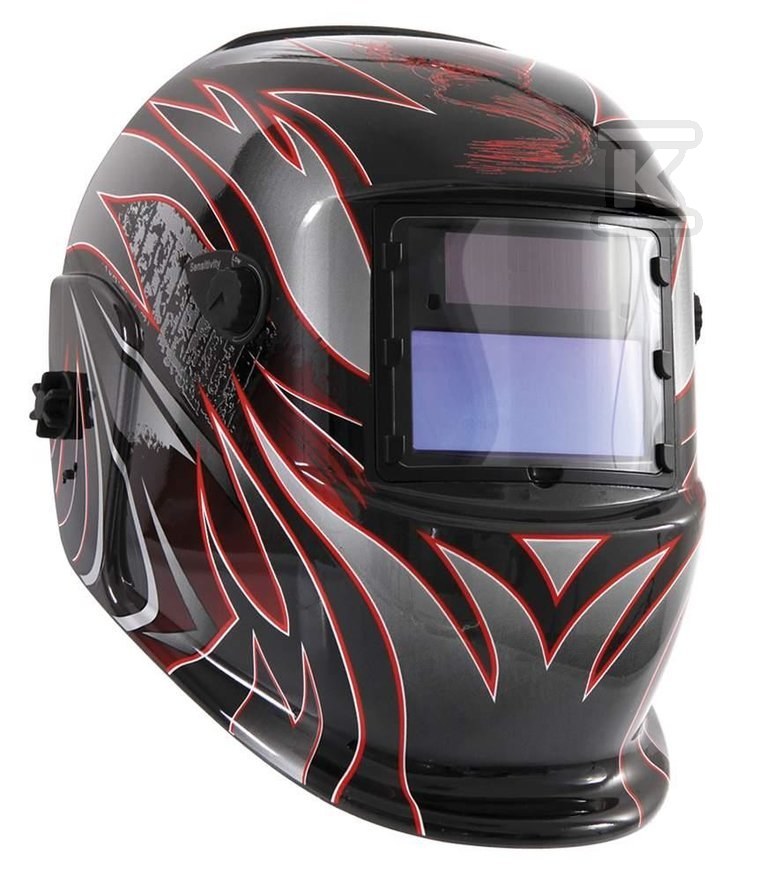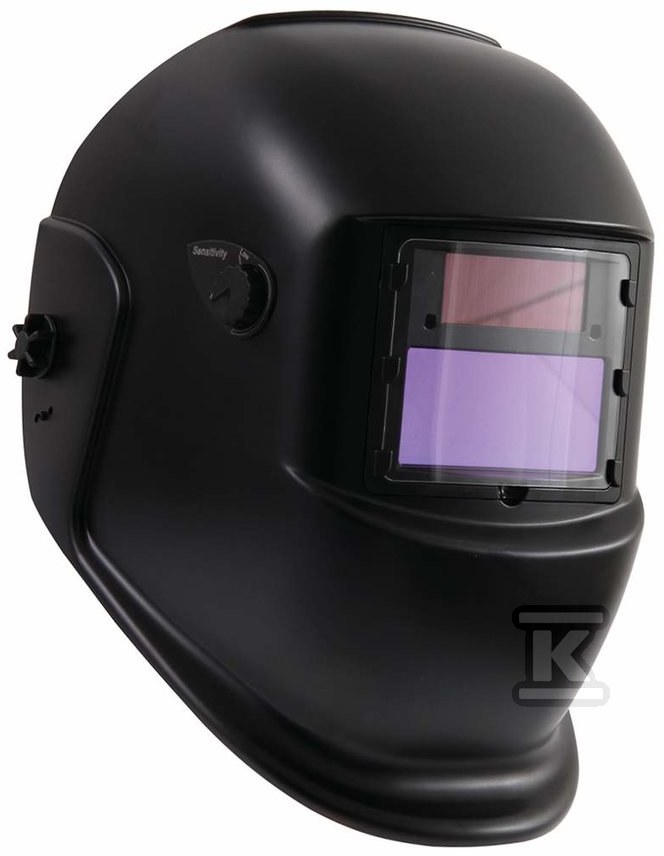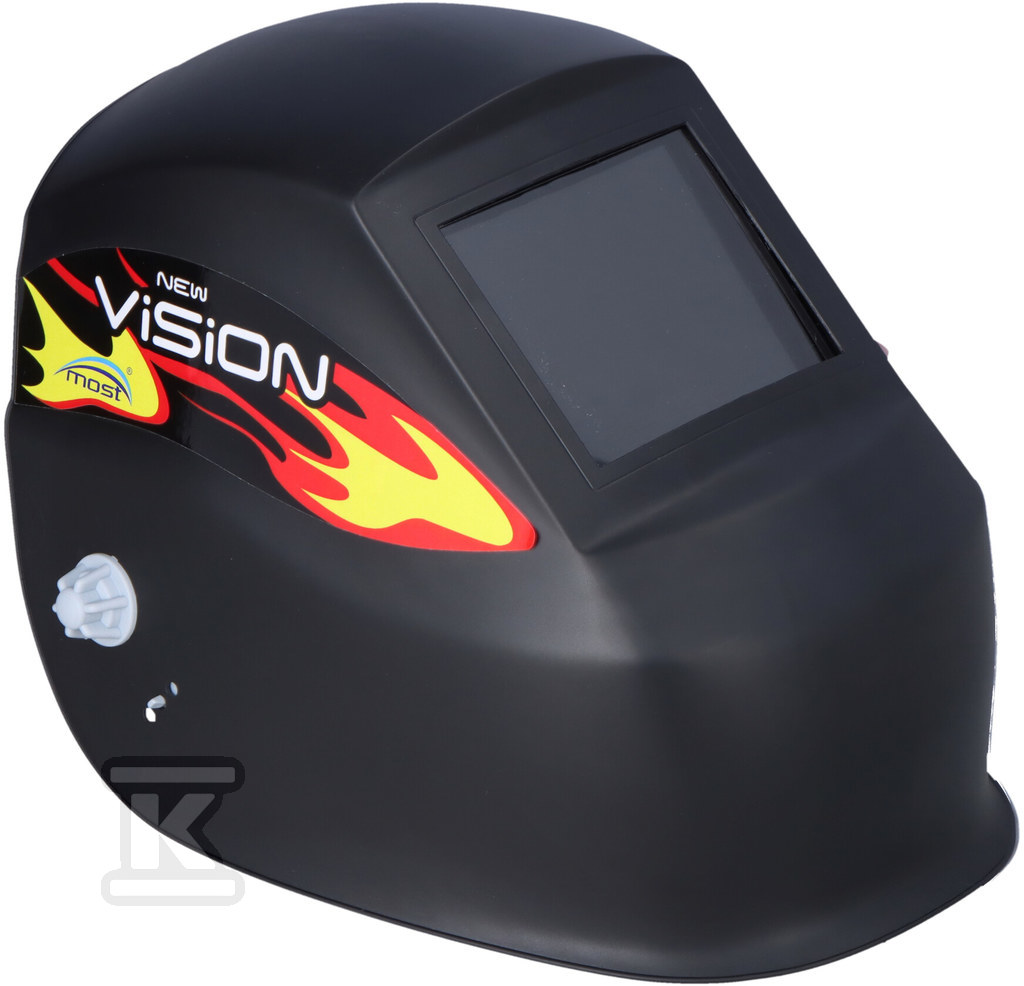In the welding industry, the safety of people who are involved in joining steel elements is crucial. Sparks or spatter occurring during welding can lead to serious damage to the health or even loss of eyesight of the welder. So how can you take care of your safety? First of all, you need to equip yourself with a professional welding helmet. This is a mandatory accessory for every welder. See which welding helmet is worth choosing and what such equipment will protect you from.

Check out the welding helmets at the Onninen wholesaler
What standards must a good welding helmet meet?
When it comes to safe welding of steel elements, you cannot ignore the issue of welding helmets. These should be manufactured in accordance with European safety standards. Both during professional and amateur welding, a welding helmet is a basic protective element for the welder.
 When choosing a welding helmet, consider first and foremost which standards a specific accessory meets. A traditional welding helmet should meet the standards marked with the numbers:
When choosing a welding helmet, consider first and foremost which standards a specific accessory meets. A traditional welding helmet should meet the standards marked with the numbers:
- EN 169 – is a standard for welding filters in welding masks and protective visors.
- EN 170 – concerns filtration against ultraviolet (UV) radiation. According to the standard, welding helmets should protect against UV waves between 100 and 400 nm.
- EN 171 – the certification covers protection against infrared radiation (IR) and assumes that the visor should be equipped with a shade providing protection against waves between 780 and 2000 nm.
- EN 175 – the parameters of this standard specify the requirements for protection during welding and related techniques, e.g. grinding. According to this standard, the welder's protective equipment should be resistant to impact and high temperatures.
When you are about to order a new helmet for yourself, make sure that the model you choose meets all safety standards and is also matched in terms of the level of shade to the nature of your work. As a welder, you need to protect your eyes and face from radiation during welding.
How to choose a welding helmet for your welding method?
 Before you decide on a specific model of welding helmet, you need to determine your individual needs. Some welding helmet models are able to provide effective protection and safety when welding with current higher than 350
Before you decide on a specific model of welding helmet, you need to determine your individual needs. Some welding helmet models are able to provide effective protection and safety when welding with current higher than 350
The most popular welding methods are MIG MAG, MMA and TIG.
The choice of welding helmet should always be adapted to the welding method in terms of: light transmittance, degree of darkness, and also taking into account an additional factor – field of view.
The welder should have access to effective eye and facial protection, as well as a good field of vision when wearing a helmet.
Welding masks are divided into 4 categories of optical classes:
- Optics – deals with the overall quality and degree of image distortion when looking through a mask.
- Visual acuity – these are key factors that determine the profitability of purchasing a specific mask. Among many parameters for a welder, visual acuity during welding is important.
- Darkening – The visor lenses must be darkened throughout the entire field of view.
- Viewing angle – refers to the degree of image distortion when looking through the visor glass at different angles.
Individual filter inserts are rated on a scale of 1 to 3. This means that both protection against ultraviolet radiation and other factors will be indicated in the technical specification in the form: 1/1/1/1.
Example? Automatic helmets indicated as EN379-1/1/1/1 are accessories that are stable, uniform and safe for the welder's eyes.
What is an auto-darkening visor?
Automatic welding helmet, or so-called auto-darkening welding helmet has a special welding filter that switches depending on the emerging welding arc. Such accessories significantly improve the level of safety of the welder.
The main distinguishing feature of automatic helmets is the ADF filter, which automatically increases the level of shading during welding. This is necessary to protect the welder's eyesight. Additionally, after stopping welding, the helmet brightens - so there is no need to open the mask to assess the quality of the weld.
What determines the price of an auto-darkening visor?
 The cost of an auto-darkening welding helmet depends primarily on the filter class of the mask. Important parameters that affect the costs include:
The cost of an auto-darkening welding helmet depends primarily on the filter class of the mask. Important parameters that affect the costs include:
- filter response time to light – this is an important parameter that indicates how quickly the mask changes the shading level after a beam of light appears during welding,
- field of view – the wider the better for the welder,
- adjustable sensitivity – modern automatic helmets allow you to adjust the dimming level control to the welder’s needs.
The cost of buying a welding helmet is an expense of up to several hundred zlotys per mask. A good choice will be the MOST S777A ALIEN 9-13 DIN welding helmet with an automatic welding filter and adjustable darkness from 9 to 13 DIN.
Alternatively, you can choose the MOST S777A black 9-13 DIN welding helmet , which has an identical range of darkness level adjustment, but is additionally equipped with a 3-step brightening delay adjustment, as well as a grinding function that allows you to perform grinding work without having to take off the helmet.
Welding helmets at the Onninen wholesaler
Both passive and automatic helmets are a good choice in terms of welder's safety. If you want to protect your eyesight, face and gain comfort at work, be sure to check out the welding helmets available in our offer. At the Onninen installation wholesaler , we offer proven solutions at favorable prices.
We also recommend the MOST NEW VISION welding helmet black (passive filter 10 DIN) . This is one of the passive models of welding masks, which will work as a protective gadget against high temperature and hot sparks during welding.